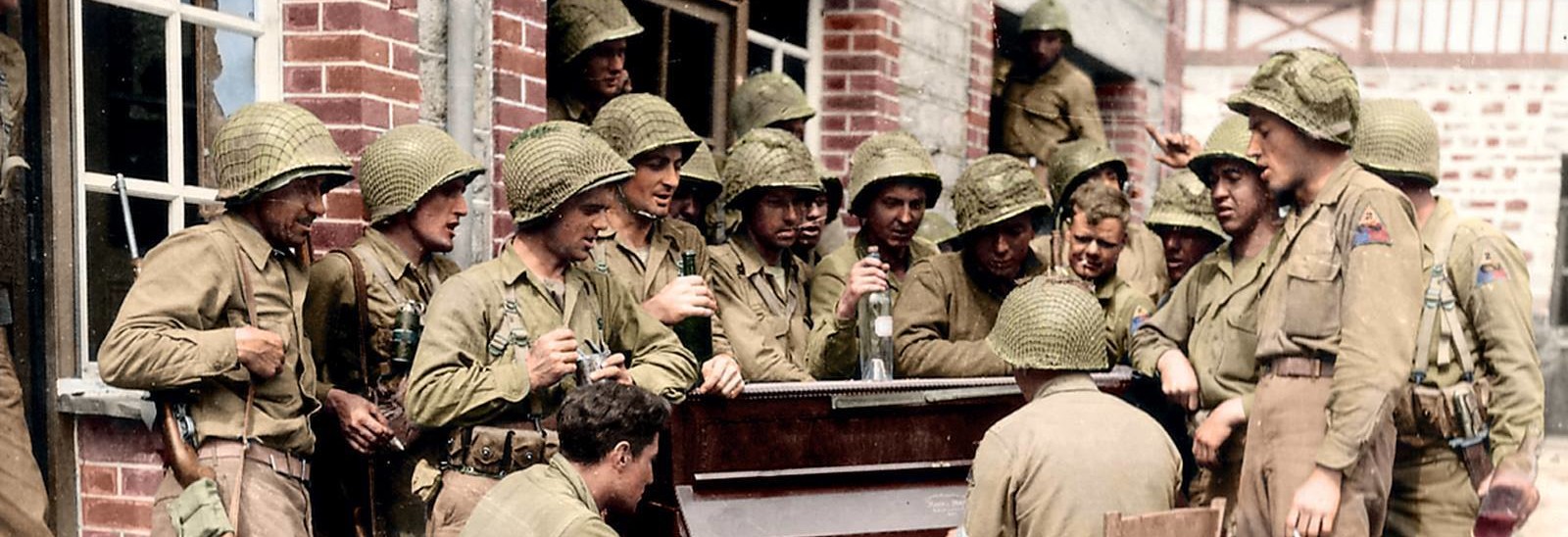M2 Treadway bridge across “the Seine at Meulan, France august 28-30 august 1944
Photos:
Update 01-2021
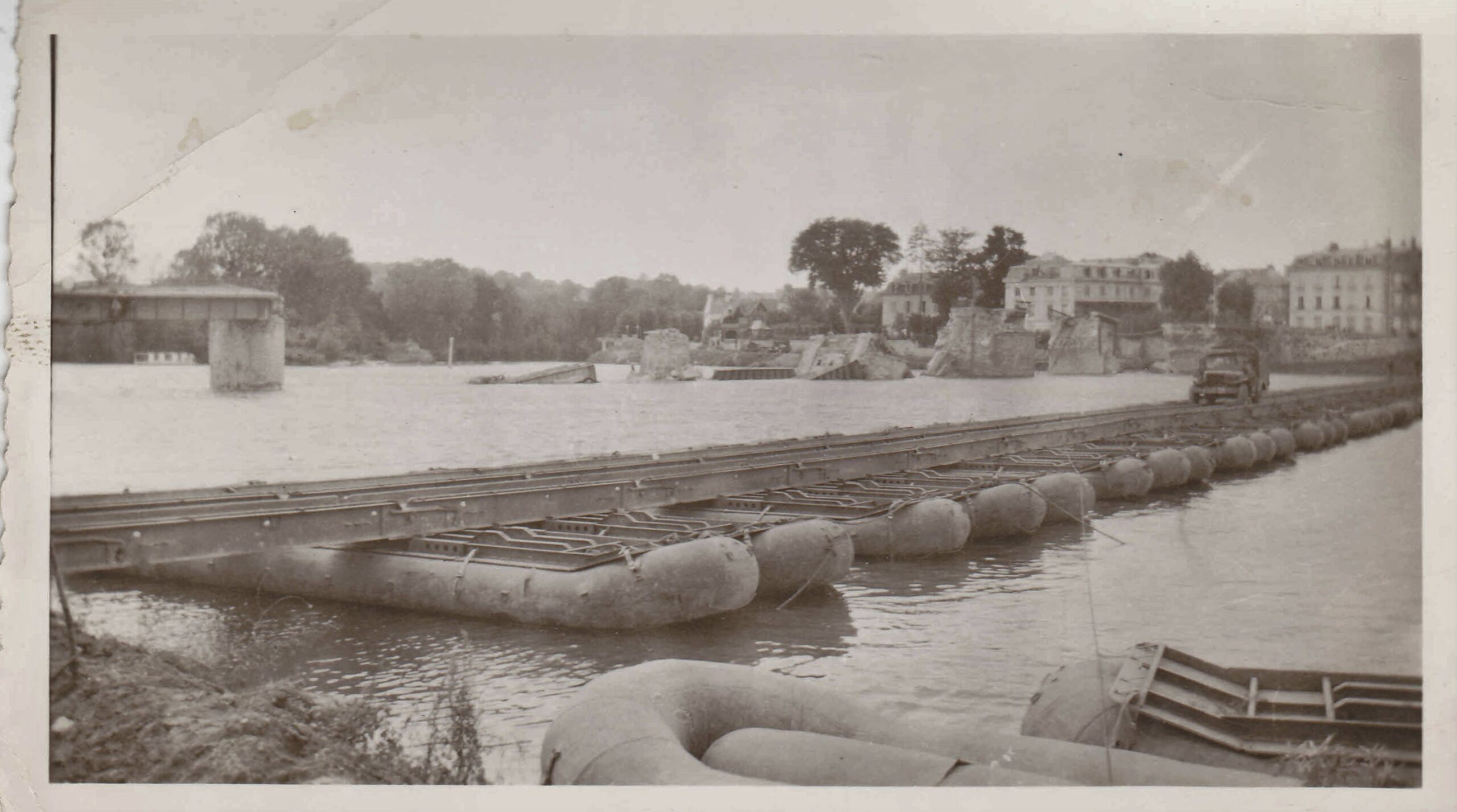
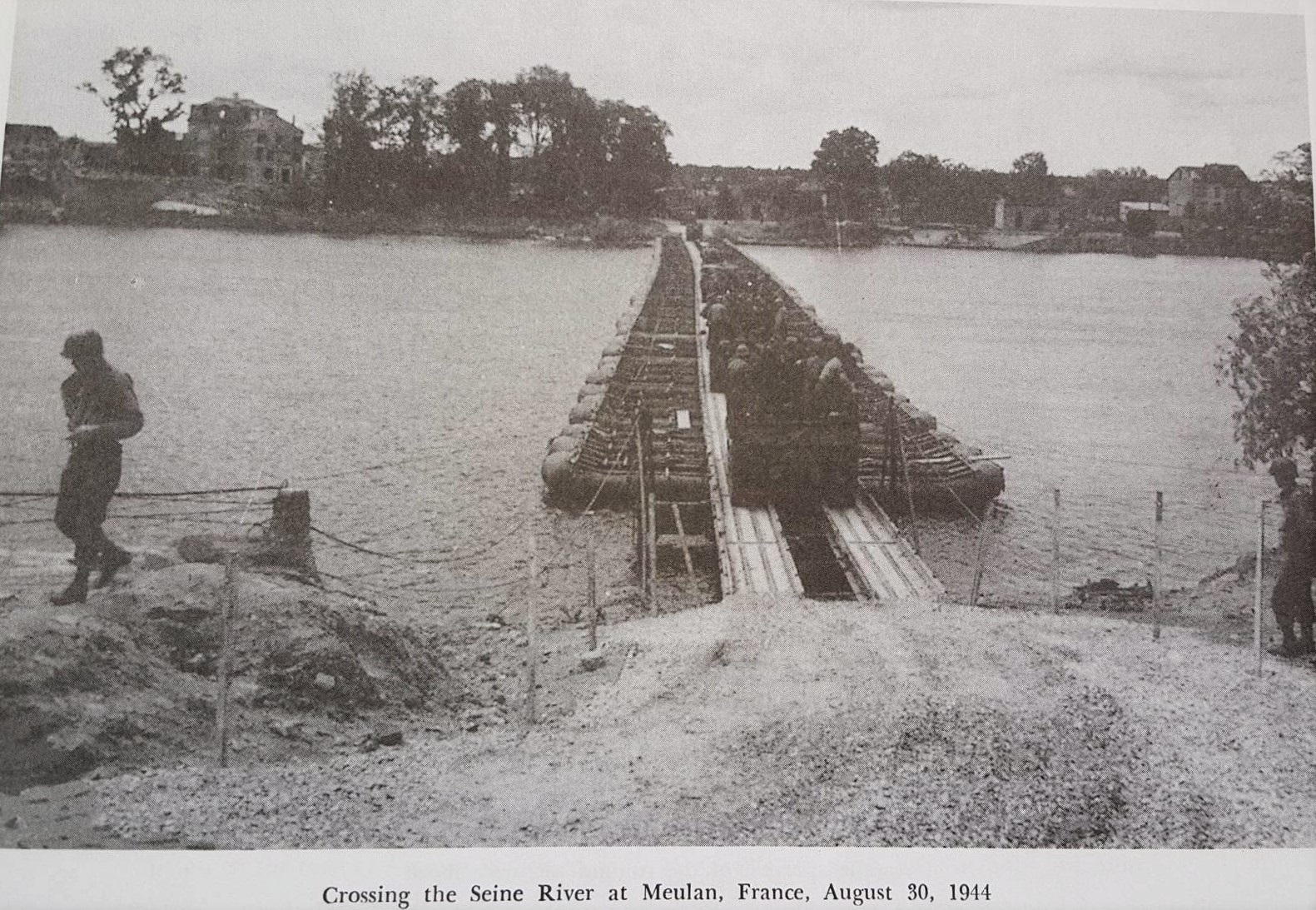
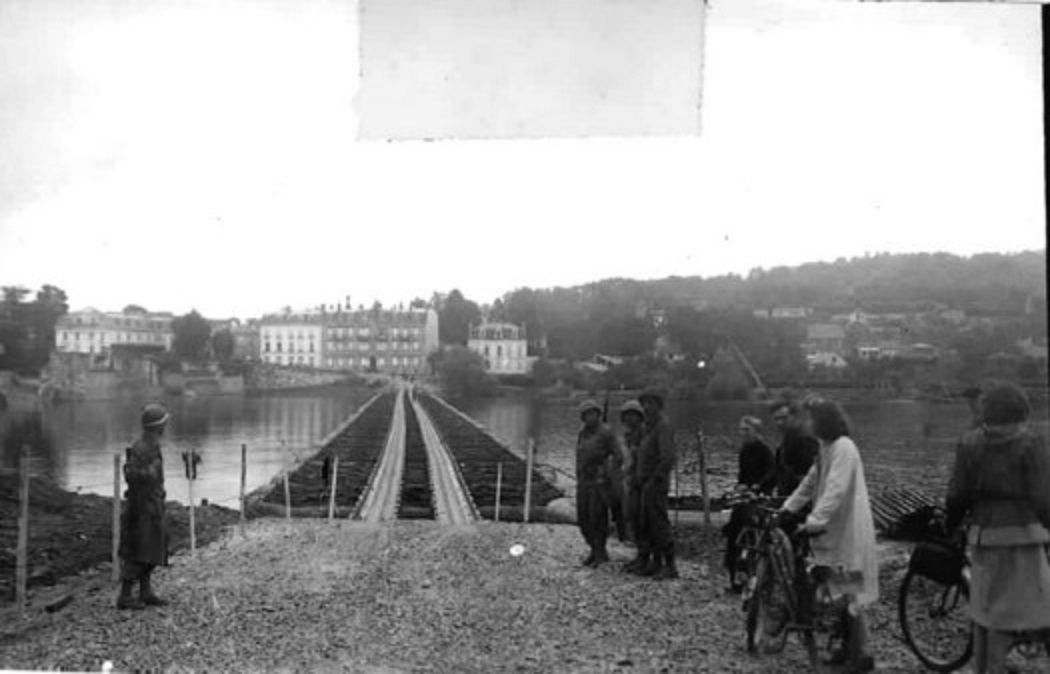
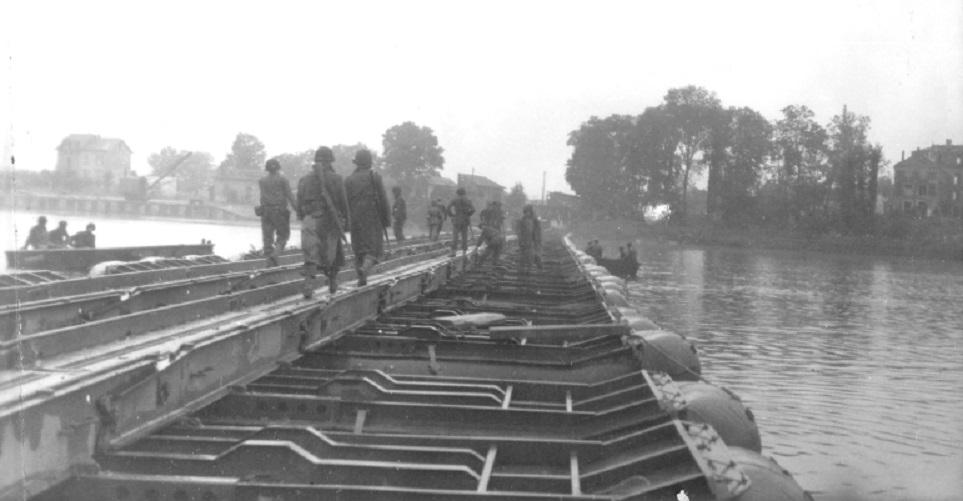
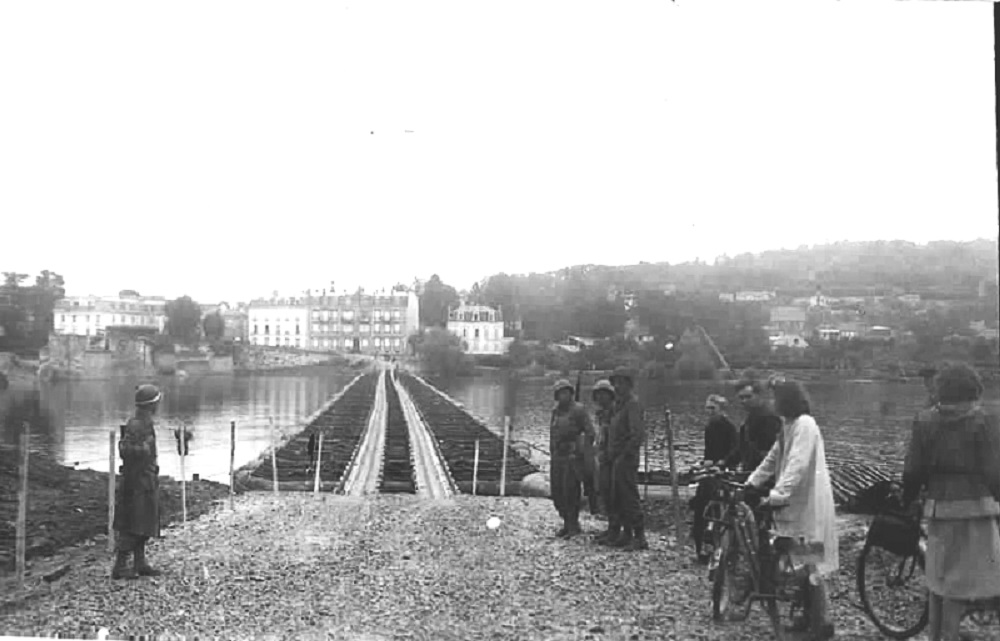
Constructed by:
Company ”E” 17th Armored Engineer Battalion, 2nd Armored Division in conjunction with the 82nd Engineers.
Date:
28 – 30 august 1944
Build in:
10 hours
Place:
Meulan-en-Yvelines, France
Length:
720 foot
Location:
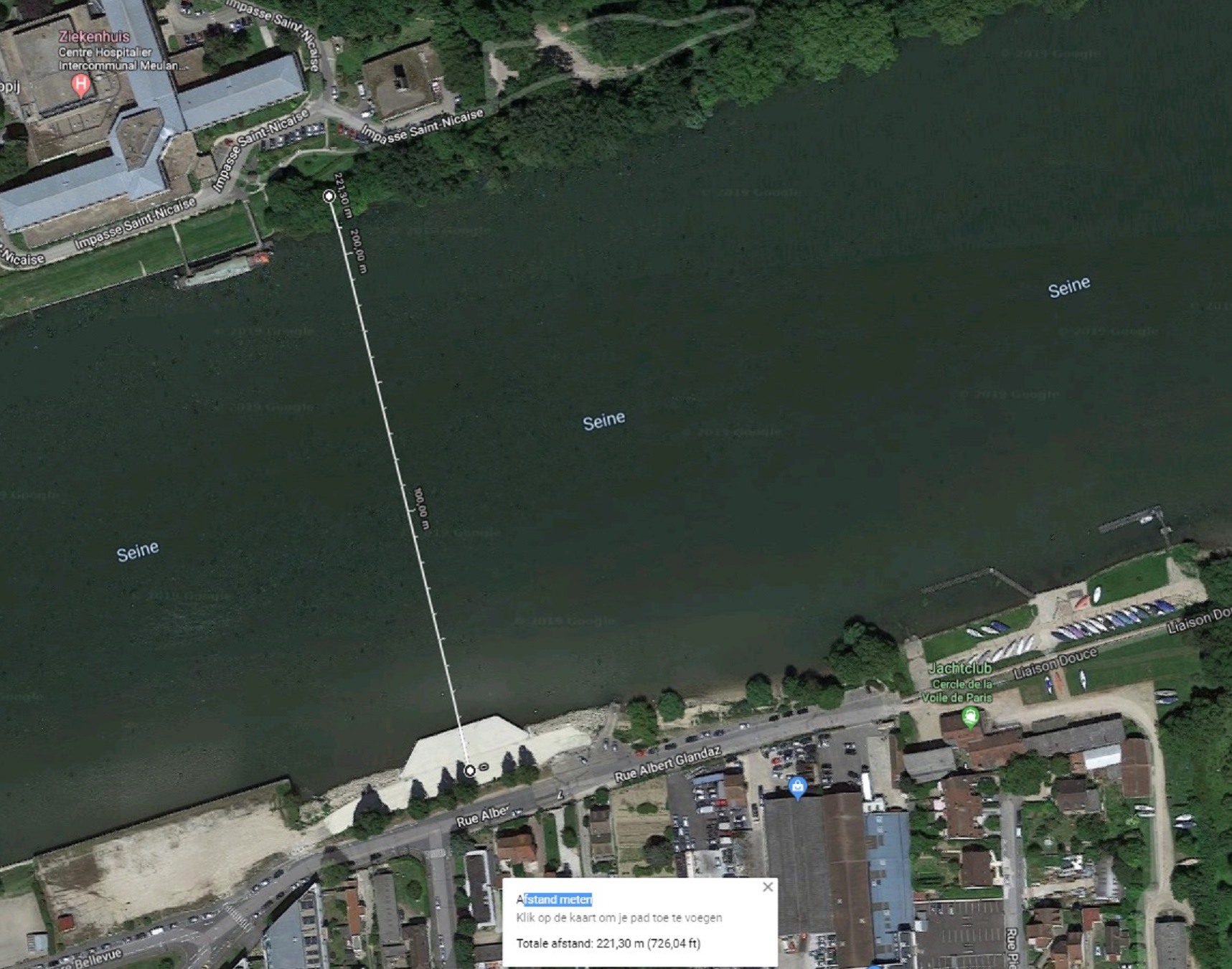
Google click link here
Information Unit History 17th Armored Engineer Battalion
Again in 27 August the Battalion moved, going to Pacy sur Eure, where a couple of days were spend re-equipping. Co. ”E” in conjunction with the 82ndEngr. (C) Bn. constructed a 720 foot floating treadway bridge across the Seine at Meulan-en-Yvelines 29 August.
Information Unit History: www.82ndengineers.org
Meanwhile the rest of our battalion (A&C) had arrived at the Seine River at Muelan, about 23 miles further downstream, and prepared to bridge the river. Infantry had moved in from a downstream bridgehead to secure the area across from the bridge site. At 800 hours on August 29th, A& C companies, supported by the 17th Armored Engineers, began con- struction of a treadway bridge to provide a XIX Corps supply route into Northern France. The infantry was immediately engaged by enemy troops. With heavy fighting taking place in the bridgehead and artillery landing in the launching area bridge work was temporatily halted. Despite the problems work resumed and the bridge was opened for traffic at 1800 hours the same day.
Total story 82nd Engineers
At the Seine
We arrived at the the French city of Brevel, near the Seine River, on August 26, 1944. Two days later Company B was detached from the battalion and assigned to the 113th Cavalry Group. History records that Eisenhower’s original battle plan was to hold at the Seine River, to allow Supplies, particularly gasoline and ammunition, to catch up with the attack- ing troops. With the Germans on the run, it was decided to continue the push to the German border. With gasoline in short supply, the mission, in our Corps area, was handed over to the 113th Cavalry Group. Orders were to move as rapidly as possible to prevent a German stand short of their homeland.Now attached to the 113th, we crossed the Seine River over a partially damaged bridge at the village of Le Pecq, about 12 miles north of Paris, in the early the morning of August 29th and into the Commune of Le Vesinet on the far side. These two communities are part of the greater Paris region. The Germans had made an attempt to destroy the bridge but only succeeded in blowing a hole through the decking. In the early morning hours of darkness a section of bridging was placed across the damaged area by another engineer unit and the 82nd was rolling.
We were the first Troops to cross the Seine at this point As we touched down the far side we were greeted by about thousand, cheering, screaming civilians, including many wearing FFI armbands (the underground resistance). The crowd surged up to our vehicles, shouting and reaching out to touch our hands. I remember a very tall man, wearing a tam, shouting in excellent American profanity, how grateful they were to see us and advising us that the Germans had just left using every means of transportation available including bicycles and horses. I learned that this man was an American soldier from WW I, who took a bride and settled in France. I also remember some members of the FFI begging us for guns and ammunition so they could conduct their own war on the Germans
While the 2nd and 3rd platoons of Company B, moved through Le Vesinet with the lead Cavalry, My platoon, the 1st, was held in reserve. We set up bivouac in a park in the center of town. I would be remiss if I didn’t reflect on the this brief respite. Le Vesinet had not been damaged and we could mix freely with the civilians, especially some very pretty girls. Soon after setting up camp, another GI and I were approached by a representative of the FFI who ask if we would be their guests at a liberation party that evening. After making sure we would not be moving out that day, we accepted. When we entered the room that night it was clear that we would be the only American soldiers there….we were representing the entire United Stated Army. This is one party I will never forget. Food, wine, music, dancing, and an endless series of toasts to us, their liberators!
(In 1995 I had the opportunity to stand in front of that very building, which looked to me just as it did over 50 years ago!)
Meanwhile the rest of our battalion (A&C) had arrived at the Seine River at Muelan, about 23 miles further downstream, and prepared to bridge the river. Infantry had moved in from a downstream bridgehead to secure the area across from the bridge site. At 800 hours on August 29th, A& C companies, supported by the 17th Armored Engineers, began con- struction of a treadway bridge to provide a XIX Corps supply route into Northern France. The infantry was immediately engaged by enemy troops. With heavy fighting taking place in the bridgehead and artillery landing in the launching area bridge work was temporatily halted. Despite the problems work resumed and the bridge was opened for traffic at 1800 hours the same day.
